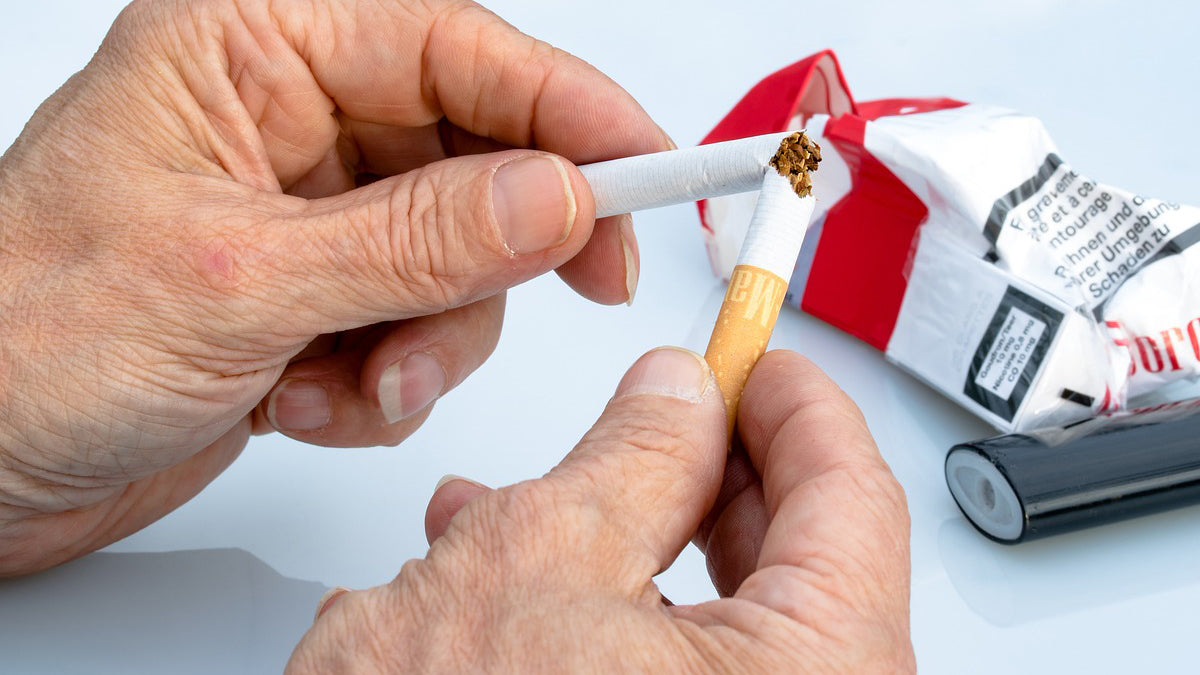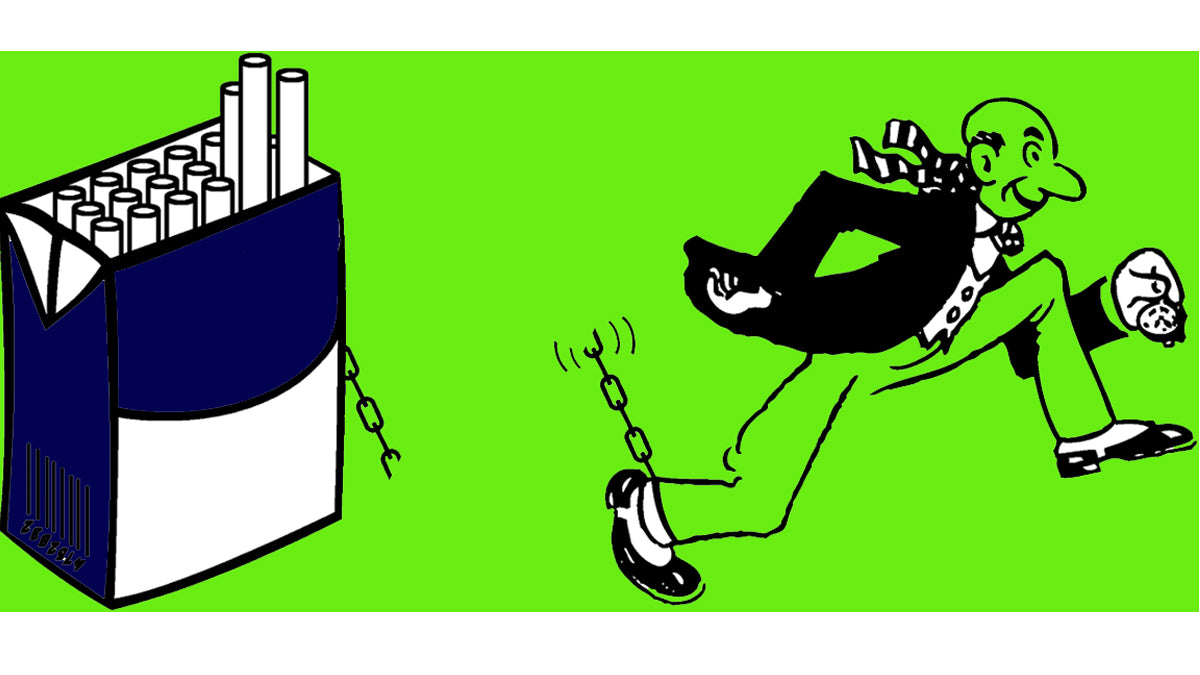10 Proven Strategies to Quit Smoking Once and For All
Thinking of quitting smoking? If yes, congratulations, you are on the right path. Worried you have been there but not done that? Stop with the self-flagellation; you are as human as your office colleague who quit and now preaches from the sky-high pedestal of propriety.
Giving up smoking is like asking that gorgeous girl on a first date- easy to plan but hard to practice. Aasan hota toh sab karte. However, it is never too late to start your journey towards a healthy tomorrow.
A practice that has both physical and psychological roots- smoking a cigarette is often ingrained as a daily ritual. It could be a quick fix to reward yourself after a stressful meeting, to unwind at your favourite adda, or even to cope with boredom. To quit smoking successfully, addressing the routines that lead to it is essential.
To have decided to quit smoking is half the battle won. Though a smoke-free life may seem too far, you can do it with the right plan. Whether you have tried to quit earlier or this is your first, here are ten strategies to help you to quit smoking.
1. What’s Your WHY for Quitting Smoking?
Quitting for a personal cause is one of the best ways to motivate yourself. Our research repeatedly threw up examples of people who had quit smoking because they got a health scare, got pregnant, lost a family member, or wanted to feel better. No reason is too small.
Think about the factors that motivate you. Is it protecting your family from second-hand smoke, setting the right example for your kids, reducing chances of falling sick, or even to feel healthier? Be brutally honest about your mission’s seriousness - where do you stand, on a scale of 1-10? Identify a reason to overpower your urge to light up and frequently remind yourself about it.
| Identify a reason to overpower your urge to light up and frequently remind yourself about it. |
2. Hatch A Fool-Proof Plan To Quit Smoking
Give me six hours to chop down a tree and I will spend the first four sharpening the axe.”
― Abraham Lincoln
Creating a plan helps connect the dream to the commitment. For some, planning day-by-day minutiae work while others thrive with a broad outline of their quitting proposal. Whatever floats your boat, count in the champagne and the streamers- appropriate expressions of jubilation.
3. Include Your Cheerleaders In Your Plans
Your friends and family will play an important role in your journey to quit smoking. They can support you through lending an ear, checking in, or hanging out with you. So send a mail, initiate a group call or shout from the rooftops- take your pick but let your tribe be a part of this journey you are about to make.

4. Create ‘Save The Date’ To Quit Smoking Permanently
Setting a date and sharing it with your tribe is an effective method to quit smoking. Go easy, but not so much. A date that is one to two weeks away will give you enough time to prepare. A few tips to help you prepare are:
- Discard smoking paraphernalia before the designated day. (Easier said than done though. You’d be surprised how the ashtray will become supremely important .)
- Choose between nicotine replacement therapy (NRT) or quitting smoking naturally.
- Sign up for a ‘Stop-Smoking’ group if you want.
- Set up a support system. Allow your fanbase to reward you everytime you hit a milestone
- Stock up on substitutes such as toothpicks, gum,and candy to help when you feel a dire urge to light up.
- On your quit day, you can keep yourself busy and avoid situations where you have the urge to smoke.
5. Avoid Triggers That Discourage Quitting (Don’t be scandalised but changing your friend circle for a while could help.)
Another tip for quitting smoking is to identify and avoid triggers. Triggers could be social, emotional, or simply an ingrained habit - avoiding smoke breaks with friends, or changing the chai tapri you hang out at for a little while could help break the smoking habit.
You must recognize the trigger for an urge to light up. A tough office call? A difficult conversation? A tight deadline? An evening out drinking? Recognize the triggers and plan what you will do when they strike.
If you smoke after a meal, consider replacing it with a fruit or a piece of gum. Users of RYZE nicotine gum have found it beneficial to chew it when they feel the craving, but any chewing gum could help.
Getting rid of triggers will help you quit smoking easily. Throw away lighters, ashtrays, and cigarettes. Wash your clothes, clean your car, and shampoo your upholstery. You can also use air fresheners to get rid of the smell. Basically, anything that connects you and smoking should be banished to the nearest black hole.
6. Manage Cravings After Quitting Smoking
Cravings are the real monsters in this journey. They hit at odd times and are difficult to get around. While we can avoid triggers, we can rarely avoid cravings here. Cravings could potentially be managed with strong willpower, interesting distractions, and calling up a friend. You could also try using an oral substitute, brushing your teeth, drinking water, going for a walk. But we agree, it is not at all easy.
Focus on reminding yourself why you quit smoking. Also, regular exercise and meditation are helpful habits to develop as you embrace this tobacco-free life. NRT (Nicotine Replacement Therapy) is another option. Nicotine gums, lozenges and patches help manage cravings and have helped many adopt a smoke-free life.
Manage Cravings Through These Activities:
|
7. Behavioural Support For Quitting Smoking
Nicotine causes physical and emotional dependence, and to quit permanently, we need to address that. Behavioural support, such as online or in-person counselling or support groups, can help you to cope with tough thoughts. Connect with our team if you need more information about this.
8. Get Moving To Reduce Withdrawal Symptoms
You can manage withdrawal symptoms better with physical activity. Movement can help deal with stress and provides a similar dose of dopamine as nicotine does. So dance, kickbox, skate, or wrestle with your dog to reduce withdrawal symptoms. Additionally, these help follow through with your resolution to quit tobacco.
9. Try Nicotine Replacement Therapy (NRT) To Quit Smoking
With NRT, you could replace cigarettes with substitutes such as nicotine gum, a patch, an inhaler, or a lozenge. By providing a controlled release of nicotine, NRTs help manage cravings and make the process of going smoke-free less daunting.
NRT Products That Can Help You Quit Smoking:
|
10. Take it one moment at a time
Nothing could be better than giving up cigarettes completely one morning but that needs tremendous will power and there is research that shows that the success rate is low. Managing cravings one moment at a time is likely to be a more successful strategy.
FAQs
1. What is the best support to stop smoking?
Though the best support you can get depends on factors such as personal choice, age, and medical conditions, evidence suggests that Nicotine Replacement Therapy is an effective method to quit smoking. NRT, in the form of nicotine gum, patches, lozenges, or nasal sprays, can also help reduce unpleasant withdrawal symptoms.
2. How do I stop craving after quitting smoking?
Cravings are a tough after-effect of quitting smoking. And though difficult, cravings can be managed with the help of distractions. You can also try exercise and relaxation techniques such as yoga or use an oral substitute like Nicotine Replacement Therapy or NRT.
3. Which medication is best to stop smoking?
Nicotine Replacement Therapy (NRT), in the form of gums, lozenges, patches, or nasal sprays, is the most common method to quit smoking. Pills such as Bupropion and Varenicline are available on prescription to help quit smoking.
4. How do you deal with triggers when quitting smoking?
To deal with triggers when quitting smoking:- Identify whether they are social, emotional, or pattern-based.
- For social triggers, try avoiding situations that make you want to smoke, like partying with friends.
- If stress is a trigger, plan how to deal with it so that you can avoid the urge.
And if it is a pattern, like smoking after a meal, try a walk or chew a piece of fruit or gum instead.
5. What is the best nicotine alternative to quitting smoking?
Nicotine Replacement Therapy products such as nicotine gums, lozenges, and patches are also commonly used to quit smoking.
Conclusion
Quitting smoking is a difficult journey across fronts - physically, mentally, emotionally and psychologically. It needs a tons of conscious effort and mindful attention to manage the cravings that are obvious when one starts. But with strong intent and proper planning, even a tough target like being smoke-free can be achieved. There are many who falter, pick themselves and try again. That’s part of the story at times. But as we say at Ryze, Try toh kar!















